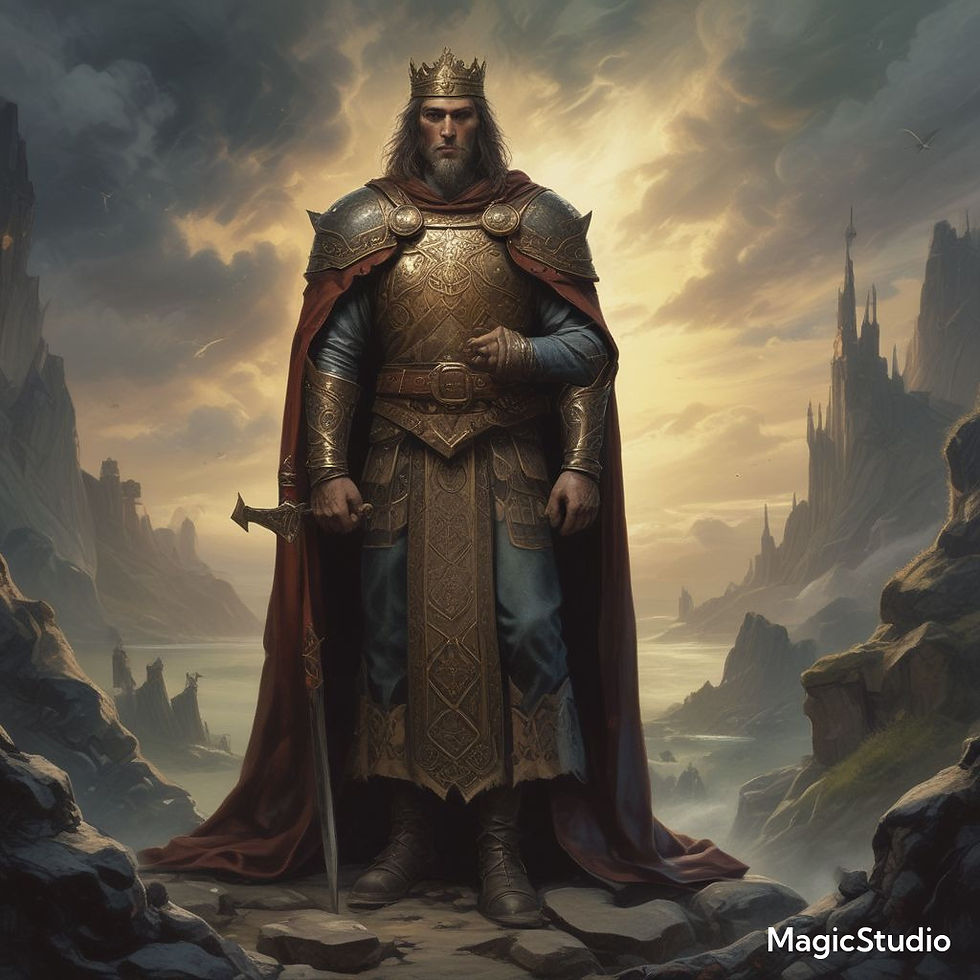The Myth of Camelot: A Journey Through Dreams, Betrayals, and Eternal Legacy
- Franco Arteseros
- Jul 24
- 4 min read
Camelot exists everywhere and nowhere, a world built on whispers, legends, and dreams. It calls to the spirit as both an alluring promise and a mysterious enigma. As the Welsh bard Taliesin once said, “In the world of shadows, the light calls forth.” This phrase resonates, inviting us into the shimmering tapestry of Camelot, where courage and despair intertwine, creating a space where humanity's highest aspirations meet their deepest failures.

Unveiling the Origins of Camelot

The first seeds of Camelot sprouted in the rich soil of Arthurian legend, dating back to Geoffrey of Monmouth's Historia Regum Britanniae in the 12th century. This early work presents Camelot as more than just a place; it reflects our hopes and fears about society. Scholars suggest Camelot may have been inspired by real locations like the Roman settlement of Camulodunum or the ancient strongholds of Caerleon.
As Camelot grew in storytelling, it became a shining marker of civilization's noble pursuits—a sanctuary where knights pursued honor, and the ideals of chivalry thrived. But over time, Camelot transformed into a metaphor for dreams, echoing across the centuries as a representation of unattainable perfection. For many, Camelot encourages reflection, prompting us to examine our own quests for meaning in a chaotic world.
King Arthur and the Round Table: A Symbol of Unity

At the heart of this tale is King Arthur, a figure molded from myth and history. Known for his unwavering commitment to justice, Arthur represents the fine line between leadership burden and tragic fate. He stands as an archetype of the ideal ruler, a light in a murky world.

The Round Table, famous for its symbolism of equality, captures Arthur's vision. Here, knights gathered to emphasize camaraderie and shared responsibility as they embarked on quests for truth and honor. Yet, like all great dreams, the Round Table's brilliance began to falter, revealing cracks in its unity. This serves as a reminder that even the most glorious ideals often clash with human nature.
The Knights, Their Quests, and Their Symbols
Each knight of the Round Table—Lancelot, Galahad, Gawain, and the enigmatic Mordred—represents unique archetypes interwoven with moral questions and personal relationships.
Lancelot: Often seen as the tragic hero, he struggles with love and loyalty. His affair with Guinevere is a stark reminder of how personal choices can lead to disaster, ultimately causing the kingdom's downfall.
Galahad: The pure-hearted knight embodies the quest for the Holy Grail, a symbol of divine grace. His unwavering spirit contrasts sharply with galahad's struggles.
Gawain: Symbolizes the fine line between honor and vulnerability, at times succumbing to the flaws he tries to overcome.
Mordred: Represents betrayal and the dire consequences it can have. His role highlights the tragic unraveling of Camelot itself.
Together, these knights illustrate not only the noble aspects of their narrative but also the fragility of our dreams. Their quests symbolize a universal search for purpose, acceptance, and redemption.
A Realm Entwined with Magic, Betrayal, and Tragedy
Camelot's beauty is laced with magic and betrayal. Merlin, the wise wizard, navigates between protector and harbinger of fate. The Lady of the Lake bestows Excalibur, a powerful emblem of strength, while Morgan le Fay lurks, representing ambition’s darker side.
Arthur’s reign suffers due to the personal failings of its characters. Ambition often clouds loyalty, while love strains under the weight of destiny. The once-perfect kingdom crumbles as individual desires conflict with collective hopes, revealing an intricate dance of aspirations and despair.
In the end, the legendary Isle of Avalon calls forth the ‘once and future king.’ This symbolizes the belief that revival can emerge from despair. This cyclical theme serves as an encouragement to those longing for a brighter future—a reminder that even in darkness, there exists a spark of hope.
The Enduring Legacy and Cultural Reflections

Camelot's legacy flows through literature, art, and culture, adjusting yet remaining rooted in its core values. From Geoffrey of Monmouth's tales to T.H. White's The Once and Future King, these stories adapt, exploring themes of power, love, and the human experience. They have also found new life in musicals and operas, captivating audiences with their lasting charm.

As time progresses, reflections of Camelot appear in our own lives. Each generation adapts its lessons, showing us that our ‘Camelots’ thrive in memory, imagination, and hope. As the legends evolve, they challenge us to contemplate our own quests for ideal worlds and the bittersweet nature of our ambitions.

In pondering Camelot, one is drawn into reflection—Where does your Camelot reside? In memories? In aspirations? The story of Camelot reminds us that our dreams of a better future often face trials. Yet, amidst life’s storms, perhaps each of us holds a personal Camelot—a space where our highest ideals and fervent dreams reside.
Let us strive to find our Camelots, nurturing the delicate optimism within us while seeking to understand the bittersweet essence of our desires. Together, we explore the rich tapestry of myth, belief, and enduring hope, ever mindful of the fragile balance between dreams and reality, between unity and betrayal.
FRANCO ARTESEROS...




















=